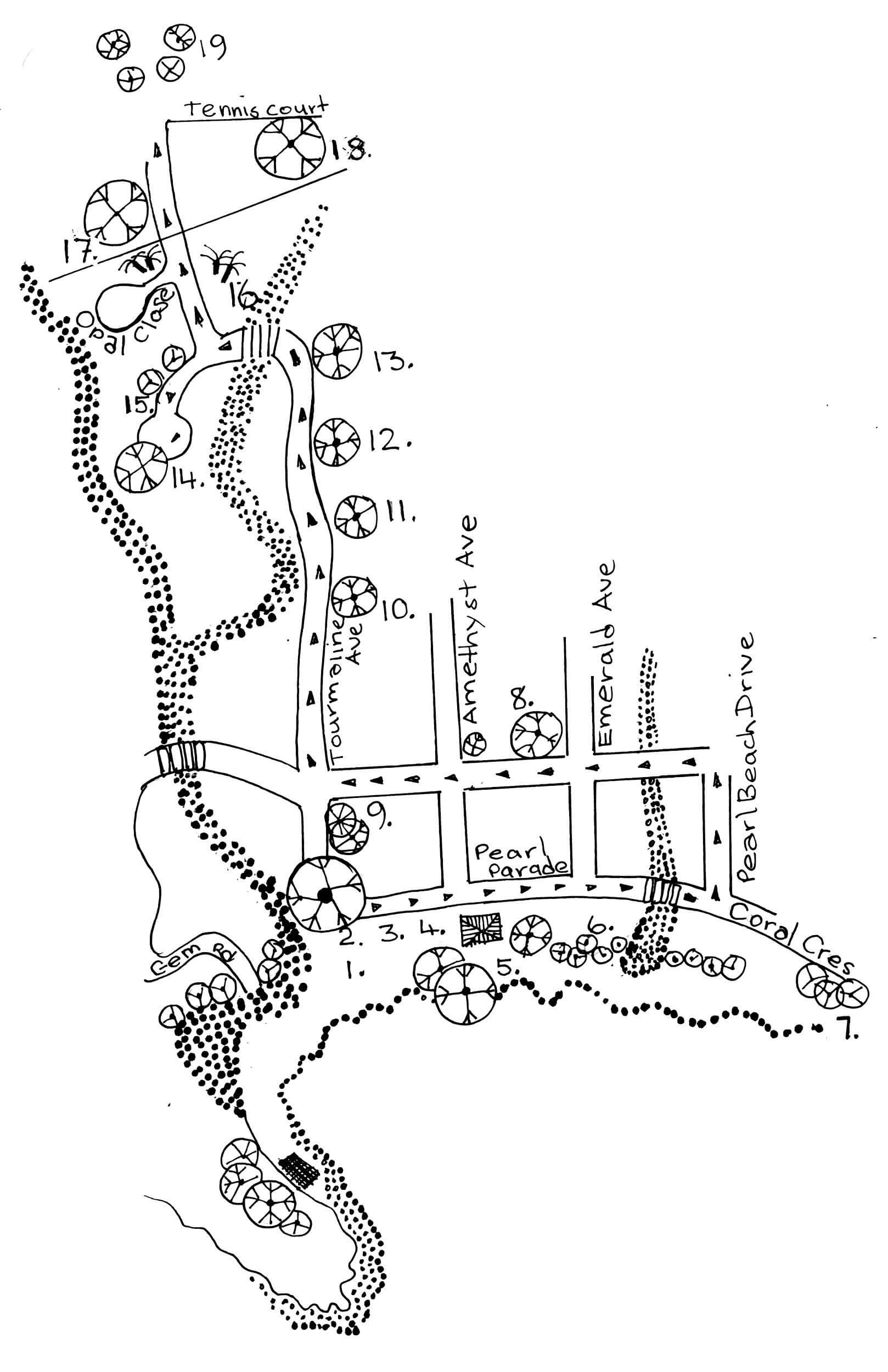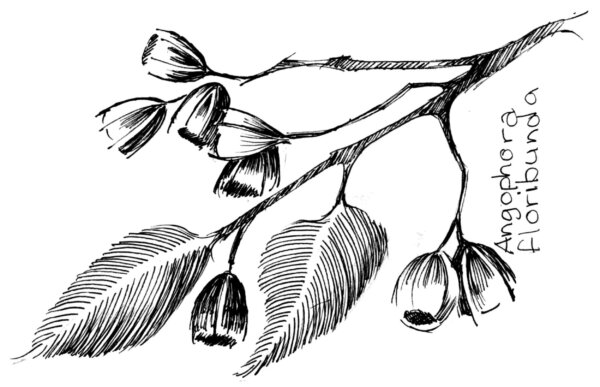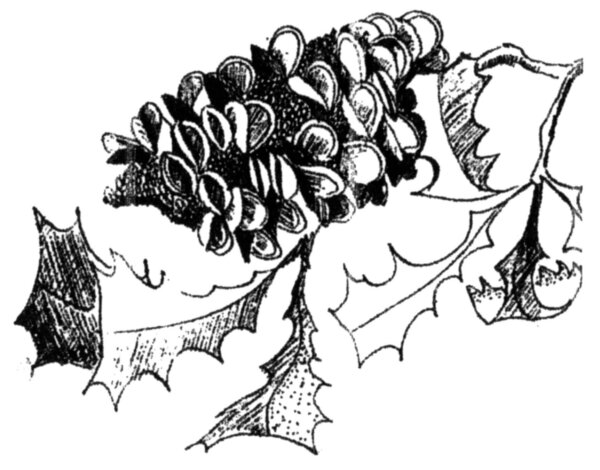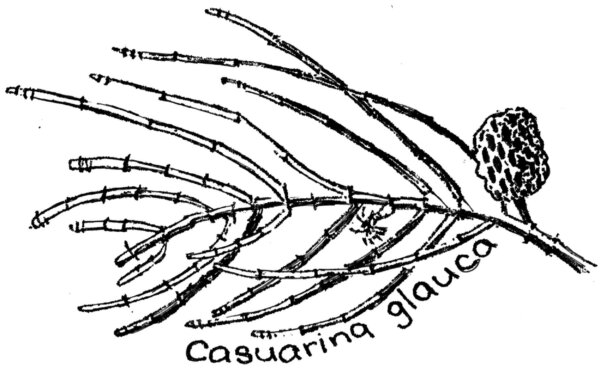The Pearl Beach Significant Tree Walk

This short walk gives you an overview of some of the significant trees growing in mainly public places within Pearl Beach. Most of these trees have been listed on the Central Coast Council’s Significant Tree Register, either as single specimens or as stands of trees.
Anybody can nominate a tree on their own or on public land. A form can be found on the Central Coast Council website
The benefits of listing are:
- Acknowledgment that the owner of the property actively supports the retention of trees
- Trees listed are given added protection by Central Coast Council and are included on the Significant Tree Register.
Pearl Beach is different from many other hot, shadeless seaside villages. It has a long and well-known history of ecological conservation and numerous residents have chosen to live here because of this and the many benefits trees provide.
To Start the Walk
1
Stand on the beach in front of Pearls on the Beach restaurant. Look right to Green Point Headland. The tree cover is mainly spotted gum (Corymbia maculata), which is growing naturally. Closer to you the trees along the brackish Green Point Creek are water oaks (Casuarina glauca) and they relish the slightly salty water. Note the privacy these trees provide for their owners.

2
Start your stroll under the huge spreading fig tree (Ficus hilli) outside the restaurant. This tree was planted in 1965 by a grassroots environmental group known as the Preservation of the Reservation Committee, a subgroup of the Pearl Beach Progress Association.
3
A little further along Pearl Parade opposite the café is the ‘fish head tree’, a Bangalay gum (Eucalyptus botryoides). During the 1940s and 50’s the heads of large fish caught off Pearl Beach were nailed here, along with relevant information about the catch. You can still see some of the old nail holes in the bark.
4
Further along just past the swings is a grand rough barked apple (Angophora floribunda) – a remnant of the natural vegetation growing before subdivision.
5
From Amethyst to Emerald Avenues there is a continuous stand of various trees that provide morning shade and protection for the homes along Pearl Parade. The stand includes bangalay gums, rough-barked apple, banksias and paperbarks. The paperbarks were transplanted from Agate Avenue in the late 1960s when clearing for building commenced. Continue along Pearl Parade and over the little bridge spanning Middle Creek to Coral Crescent.
7
On your right is a mature stand of paperbark (Melaleuca quinquenervia). This area was a camping ground during the 1930s’ and ’40s. Walk up Pearl Beach Drive, then turn left into Diamond Road.
8
Outside number 28, is a rough-barked apple (Angophora floribunda), a remnant of the vegetation on the sandplain before subdivision. Also, a good specimen of spotted gum (Eucalyptus maculata) outside number 10.
9
When you reach the corner of Diamond Road and Tourmaline Avenue, look left to see the huge rough-barked apple outside 2a Tourmaline. Also notice a very tall red gum (Angophora costata), which was planted in 1995.

10
Outside 14 Tourmaline is another Angophora floribunda which confirms the presence of the rough-barked apple on the sandplain prior to subdivision. At number 23 is a very smooth and sensuous hybrid spotted gum.
11
In front of number 18 is everybody’s favourite, the rusty gum (Angophora costata). Your nose will guide you to number 20 and a small stand of Lemon Myrtle (Backhousia Citriodora) planted in 1995.
12
Outside number 26 is a red bloodwood (Eucalyptus gummifera). Aboriginal people sucked the nectar from summer flowers and also used the resinous sap to stop their fishing nets from fraying. Further along, outside 34, is a group of cork barked casuarina (Casuarinaceae torulosa). The cork-like bark protects them from fire and the seeds are a primary food source for black cockatoos.
13
At number 36 is a fine example of a flooded gum (Eucalyptus grandis), probably planted as a street tree in the late 1980s following the subdivision of the five-acre Cattley estate.
14
Continue along Tourmaline. At number 51 is a Brush Box (Myrtaceae conferta), often used as street trees. Continue into the cul-de-sac to number 60. In the garden on the left is an excellent example of tallowwood (Eucalyptus microcorys). The timber makes fine flooring. This tree was planted during the late 1960s by the original owner.
15
Turn back now and notice the two young red gums (Angophora costata) outside 56, then turn left into Opal Close.
16
Residents have preserved the magnificent and ancient grass trees (Xanthorrhoea arborea) in front of numbers 2 and 13. These trees grow just 2.5 cm a year. The resin was an invaluable adhesive for Aboriginal people, often used to patch up leaky coolamons and yidaki (containers and didgeridoos). Shavings of the dried flower stalk were used to generate fire by the hand-drill method.
17
As you enter the recreation area, notice the huge red gum on the left.
18
Alongside the first tennis court is a wonderful example of turpentine (Syncarpia glomulifera), a timber much used in wharves and railway sleepers.
19
The walk ends just beyond the tennis clubhouse, where there is an ancient group of old man banksia (Banksia serrata). Young banksias are regularly planted in an attempt to retain this stand for future generations.

Special thanks to Pim Sarti for the illustrations. We are indebted to the walk’s creator, Lois Westlake, plus previous supporters Carol Serventy, Mary Hawthorne and Chris O’Brien and to the many others who have planted, cared for and spoken in defence of trees.
Created by the Pearl Beach Progress Association
